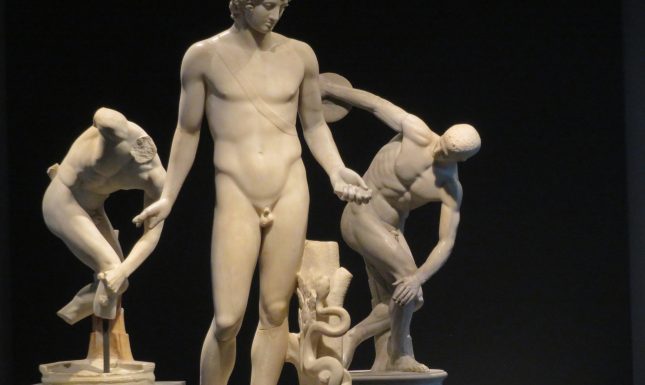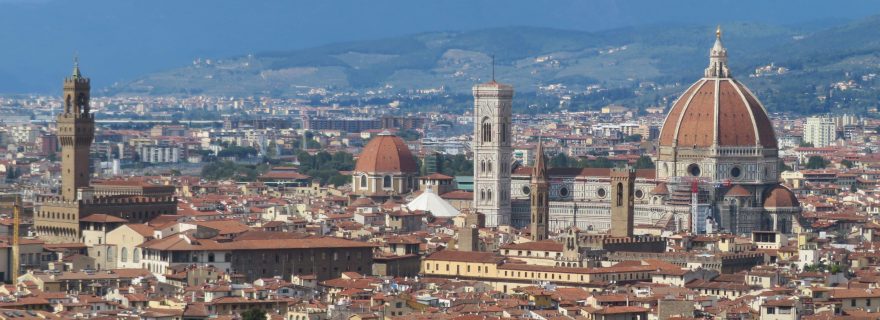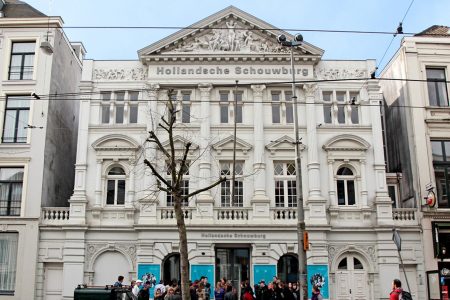Studying (art)history in Florence and Rome
History student Sjoerd Ramackers went to Italy with the Minor Rome-Florence to study its art and history for four months. Sjoerd recounts his experience as a historian learning about art history and its methods on site in Rome and Florence.

It started to rain when I left Florence’s train station. Not the weather I expected to have in Italy, especially given the fact that it was early September! Soaking wet I arrived at the Dutch University Institute for Art History (NIKI). I felt like the odd man out; this is an art historical institute, while I am a History student. Nine other students came from all over the country and we formed a mix of History and Art History students. Still, most of them did knew artists like Giotto, Ghirlandaio and Vasari, and they rolled their eyes when I again failed to pronounce the name of Sandro Botticelli (in my defence, it is a real tongue twister!).

Slowly I integrated with the group and together we looked at the artworks in a practical empty Uffizi (figure 1) or Palazzo Vecchio. We had to write essays about different works of art, from different periods in Italy’s history. One moment I looked up at Giotto’s bell tower, and then we bended over a six hundred-year-old manuscript depicting the world (figure 2). Although we integrated, we still asked different questions. Whereas the art history students first wanted to find out what exactly was depicted, history students immediately wanted to know why it was made. We followed lectures from experts of the institute and different Dutch universities and went with them into the city. We did not need to look at powerpoints to see the objects but could experience them on site!

After two months we all felt rather sad to leave the city. However, we were in luck, since our program was only half done! Now we traveled to Rome where it also rained the first days! During this period we stayed at the Royal Dutch Institute in Rome (KNIR). For the next two months I walked mainly outside, either for lectures, or around Forum Romanum in my free time or going to the Santa Maria dell’Anima to prepare my presentation (figure 3). One of the best excursions we had was on an early Wednesday morning: we all went to Saint Peter’s hoping to avoid the tourists. Unfortunately, the instructors forgot that the Pope has his weekly audience then, which attracted even more people. Luckily, they took us on a short ‘church-tour’ through Rome, pointing out details and highlights in famous churches that I would never have seen. Although it was improvised, it was an amazing day.

In four months, we studied the Renaissance, the scientific revolution, the need to create monuments and the development of the Italian museum. We were no longer tourists anymore and felt at home in these amazing cities. I learned a lot about the art-historical approach. Were historians tend to look from a concept or theory towards an event in the past, the art historian tries to find out what the object tells him and then tries to place that in the historical context. At the same time, the art historians learned how History students work with their literature. For us, literature is not just nice to look into to get an idea of the historical context, it is a construct with underlying assumptions about the past and therefore tells different stories about the same event. We have a fundamentally different approach (therefore Art History and History are different disciplines) but these approaches can complement each other. By combining those approaches one can discover a picture that traditional historians and art historians could never see.
If you want to experience this, you can enrol for next semesters minor until the 15th of May. Hopefully, the world will look familiar again after the summer (figure 4).

For more information about the minor program, you can visit the websites of the institutes. If you have any questions, do not hesitate to contact them or me. You can apply until the 15th of May.
If you want to get to know the institutes, or get updates about their programs, you can always check their social-media here and here.
Sjoerd Ramackers is a third-year student of History at Leiden University. He focuses on Dutch History, especially the 17thand 18th century, and particularly the history of Leiden. At the same time, he gets enthusiastic about Ancient and Medieval History and tries to use Art History in his researches. Contact: s.j.ramackers@umail.leidenuniv.nl



0 Comments